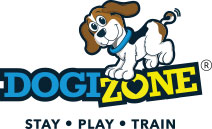What is PSA?
Protection Sports Association
The Protection Sports Association (PSA) was developed in 2001 in the United States of America. The mission of the organization and sport is to provide a competitive outlet for obedience and protection training in a scenario based program of dog sport. In order to perform in the sport dogs must pass an entry level certificated called a PDC, before going on to the competitive levels of PSA1 through PSA3. Each level of the sport increases in complexity in pressure on the dog from decoys and environmental distractions as well as the handler must navigate scenarios involving risk-reward tradeoffs. PSA is unique in that pattern training is virtually impossible as every trial and scenarios differ. The higher levels of competition have more surprise scenarios in both obedience and protection presented to dog and handler teams.
PSA consists of an obedience phase and a protection phase. At levels 1 – 3 obedience is scored on a 100 point scale. Protection is scored on a 200 to 240 point scale depending on level being achieved.
• Obedience is unique in PSA from other protection sports in that suited decoys are on the field during obedience routines in levels 1 – 3 of PSA. In PSA1 the suited decoy is seated in a chair during the majority of the routine. The decoy will toss some distractions at the dog during certain sections of the obedience routine. In PSA2 the decoy or multiple decoys will walk or jog around the dog and handler team and interact with the handler verbally. The decoy will provide food refusal and distraction during position changes, jumping and retrieve exercises. In PSA 1 and PSA 2 the pattern is known to the handler in advance. In PSA 3 the routine is drawn up by the judge as a surprise scenario. Skills familiar to the dog and handler team such as heeling, jumping, climbing, retrieves, food refusal and position changes are known to the handler but the order of the routine is not known until the day of the trial. The decoys on the field during the PSA 3 will run and agitate the dog while heeling, staying and doing motion exercises.
• Protection during the PSA 1 involves a car-jack scenario which involves the use of a hidden sleeve as well as attack on the handler from hiding, courage test under distraction and a surprise scenario. In PSA2 there are four bite scenarios, three of which are known to the handler and one surprise. Two decoy courage tes, fended off attack behind a vehicle and a call off. PSA3 may involve muzzle attacks, all other encounters are in full bite suits. Judges are provided guidelines for PSA3 scenarios which are not made known to the handler until the day of the trial.
There are a variety of other protection sports available to handlers and their dogs but the above are currently the most popular in the United States. All offer an opportunity to challenge the handler and dog as well as create exceptional bonds between dog and handler. Entering into protection sports with a dog requires dedication from the handler. Many of the dogs trained in protection sports live safely among family members and because of their high level of training these dogs are extremely safe and excellent examples of responsible dog ownership.
